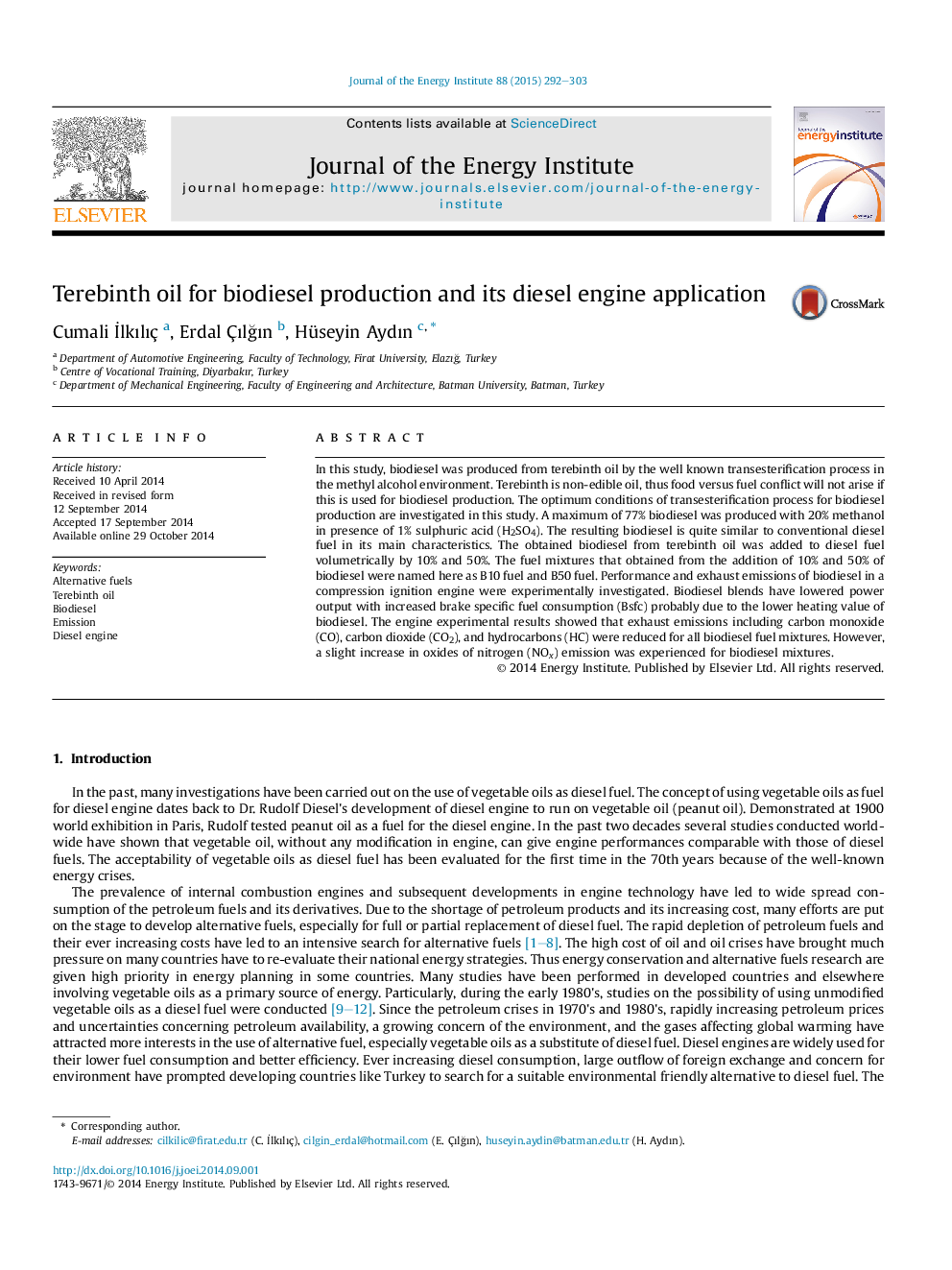| Article ID | Journal | Published Year | Pages | File Type |
|---|---|---|---|---|
| 1747634 | Journal of the Energy Institute | 2015 | 12 Pages |
Abstract
In this study, biodiesel was produced from terebinth oil by the well known transesterification process in the methyl alcohol environment. Terebinth is non-edible oil, thus food versus fuel conflict will not arise if this is used for biodiesel production. The optimum conditions of transesterification process for biodiesel production are investigated in this study. A maximum of 77% biodiesel was produced with 20% methanol in presence of 1% sulphuric acid (H2SO4). The resulting biodiesel is quite similar to conventional diesel fuel in its main characteristics. The obtained biodiesel from terebinth oil was added to diesel fuel volumetrically by 10% and 50%. The fuel mixtures that obtained from the addition of 10% and 50% of biodiesel were named here as B10 fuel and B50 fuel. Performance and exhaust emissions of biodiesel in a compression ignition engine were experimentally investigated. Biodiesel blends have lowered power output with increased brake specific fuel consumption (Bsfc) probably due to the lower heating value of biodiesel. The engine experimental results showed that exhaust emissions including carbon monoxide (CO), carbon dioxide (CO2), and hydrocarbons (HC) were reduced for all biodiesel fuel mixtures. However, a slight increase in oxides of nitrogen (NOx) emission was experienced for biodiesel mixtures.
Related Topics
Physical Sciences and Engineering
Energy
Energy Engineering and Power Technology
Authors
Cumali Ä°lkılıç, Erdal ÃılÄın, Hüseyin Aydın,
